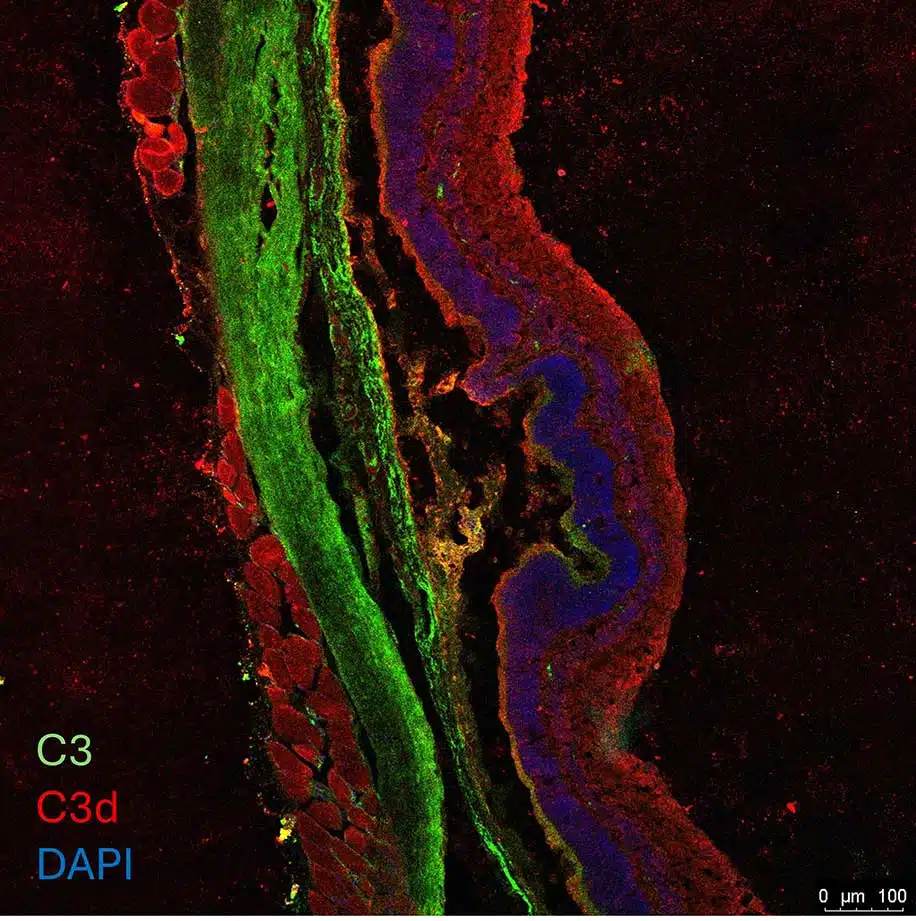
We offer a variety of validated pre-clinical models for wet and dry age-related macular degeneration and Stargardt's disease. Does your project have unique needs? Inquire about our custom services.
Custom Services
Need a model not listed here? Speak with our experts today about custom model development and cost sharing opportunities.
Featured Capabilities
Our ophthalmology team has supported age-related macular degeneration research programs for decades with ophthalmic animal models.
Intravitreal and subretinal injections are conducted by our skilled and experienced veterinary team using fundoscopy-guided delivery. This ensures precise administration of study material and guarantees robust, repeatable study read-outs.
Lipofuscin burden is non-invasively assessed using semi-quantitative fundus autofluorescence. This procedure enables repeat measures over time and is ideal for dose-range finding.
Tissue sections are prepared and read to evaluate tissue architecture as a measure of disease state. IHC and IF of retinal cross sections allow detailed queries of target engagement.
Fundus image lesions are masked and quantified by segmented areas in pixels to reliably and objectively measure lesion differences between groups.
The integrity of retinal cross sections is assessed as a primary structural endpoint using non-invasive optical coherence tomography. This technique offers repeat measures and can corroborate terminal histological findings.
Quantify lipofuscin components such as A2E and other bis-retinoids directly by mass spec analysis.
Our veterinary team can incorporate treatment methods to suit your research needs, and create customized endpoints for your study.
Case Study: Enzyme Therapy in Dry Age-Related Macular Degeneration

In this featured case study, the ABCA4-/- blue light illumination (BLI) model of Stargardt's disease and dry age-related macular degeneration was used to test the efficacy of a retinal lipofuscin catabolizing enzyme delivered as an mRNA construct with lipid nanoparticles. Lesions by fundoscopy were attenuated in the treated group compared to control containing GFP mRNA or vehicle control.
Test Article Preserves Retina
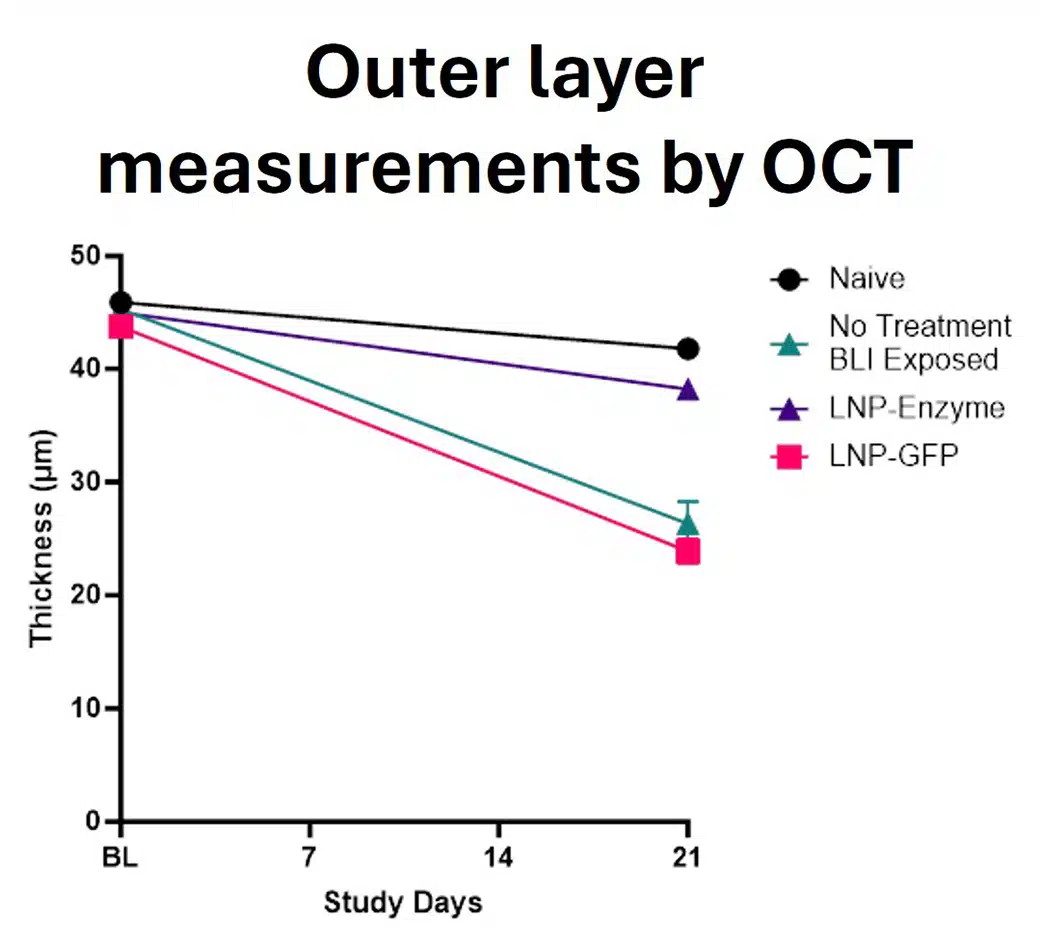
Test Article Preserves Structure by OCT
Outer layer thinning is expected in the ABCA4-/- BLI model but is markedly reduced to nearly baseline levels in the treated, but not control, group.
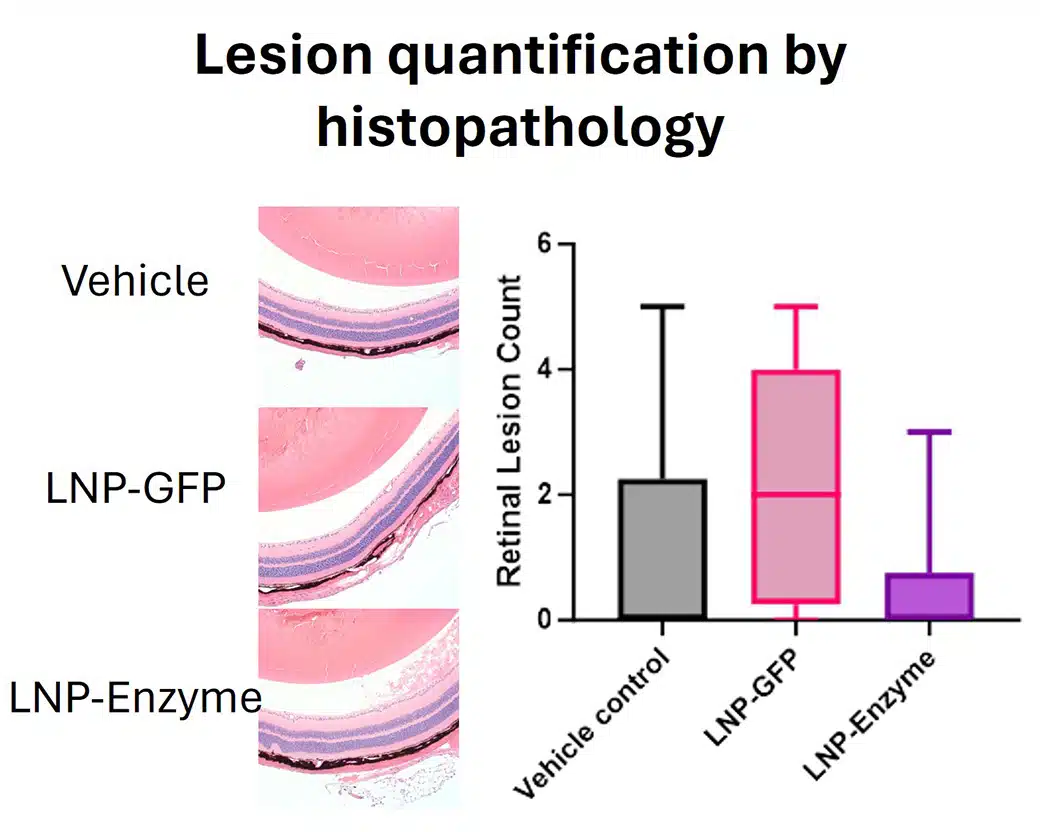
Test Article Reduces Lesions by Histopathology
Scoring by our board certified pathology team revealed significant reduction in lesion quantification in treated, but not control, groups.
Supporting Capabilities and Services
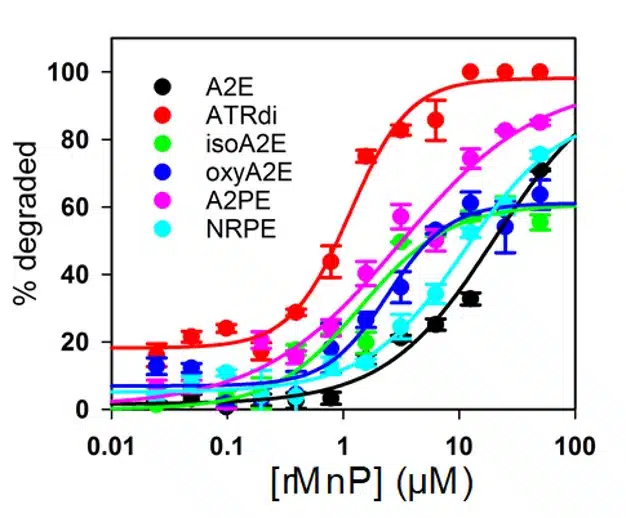
Bis-retinoid synthesis and biochemistry assays
The accumulation of bis-retinoid species such as A2E in the lysosomes of RPE cells are a hallmark of age-related macular degeneration and Stargardt's disease. We have assay-ready material and bioanalytical techniques available for a variety of applications.
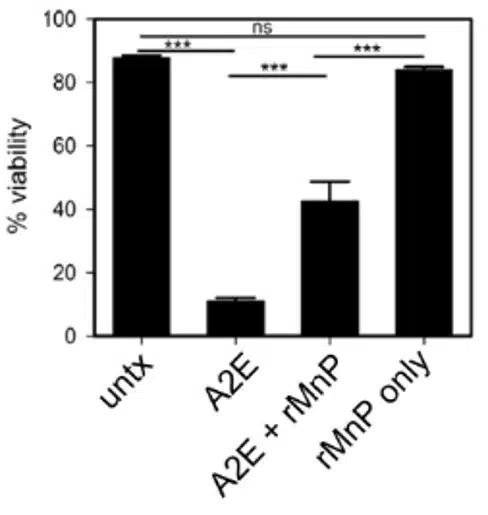
Cytotoxicity screening
In addition to traditional cytotoxicity screening, we offer cellular efficacy models like A2E-mediated cytotoxicity to inform and augment in vivo experimental findings.
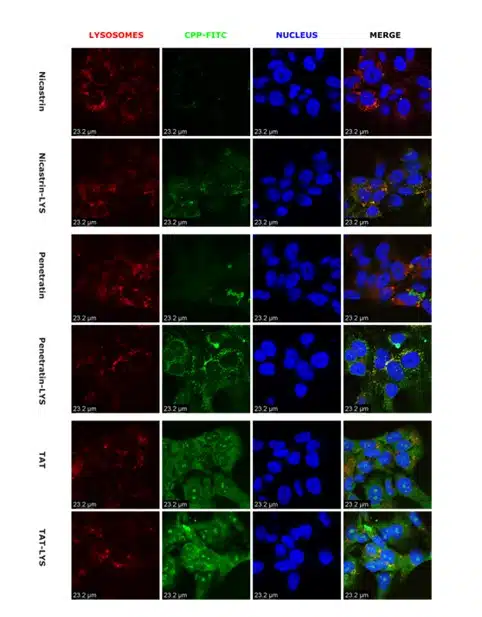
Ocular Tropism Panels
Want to deliver your cargo to specific ocular cellular populations? We have cell-targeting and cell-penetrating peptide screens available that can be utilized to deliver all manner of cargo to specific cell types and even intracellular compartments.
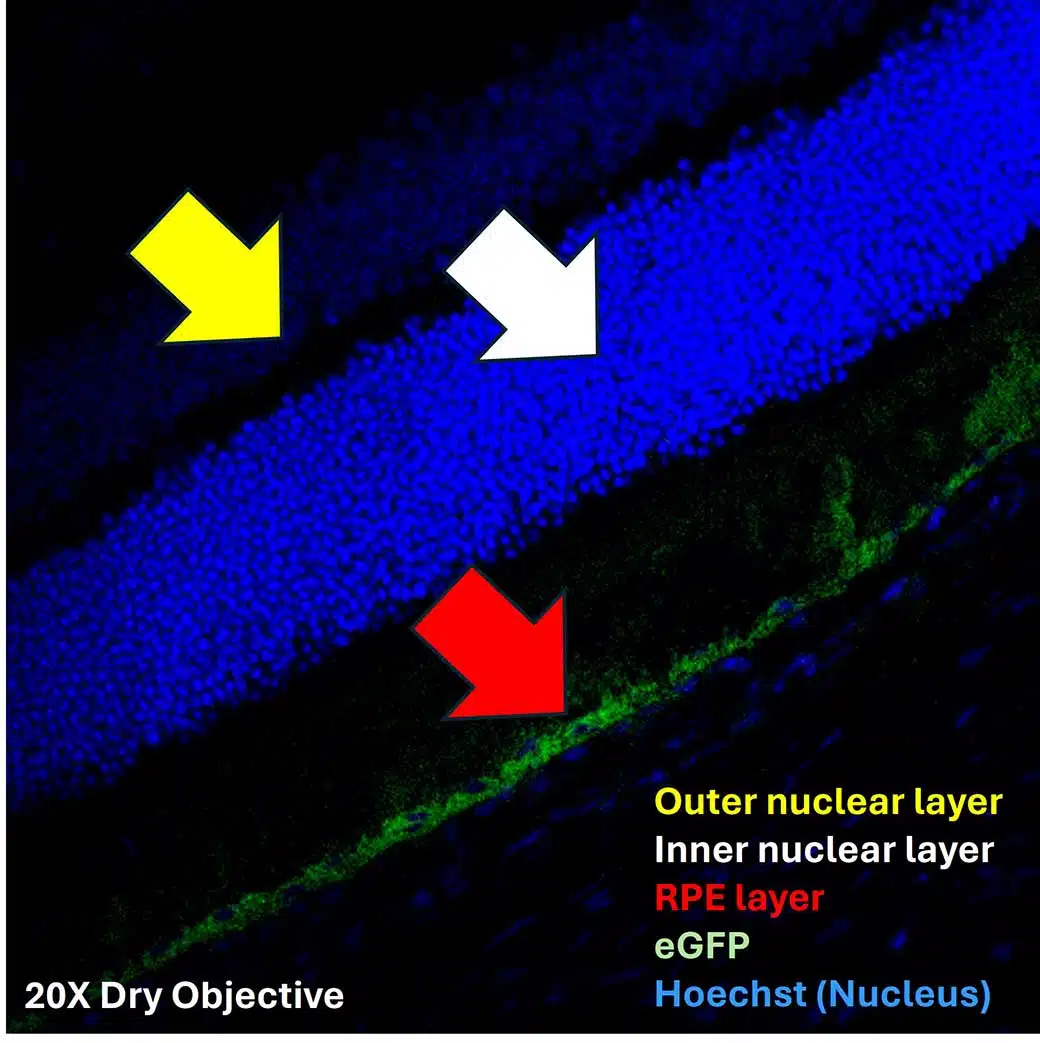
Gene therapy and biodistribution studies
We offer a variety of services to support gene therapies and other next generation therapeutic modalities. From cell-based screening to optimize construct half-life and bioactivity, to in vivo biodistribution, we are here to support your success.
Frequently Asked Questions
Answers to some of the most common questions about age-related macular degeneration research.
While no animal model of age-related macular degeneration faithfully recaptures all aspects of human pathology, our experts can assist you in selecting the best model for your test article.
Age-related macular degeneration consists of an atrophic or "dry" form, which can progress to a neovascular or "wet" form.
Macular degeneration refers to several different maculopathies characterized by deterioration of the posterior retina. Age-related macular degeneration is the most common subset of macular degenerations.